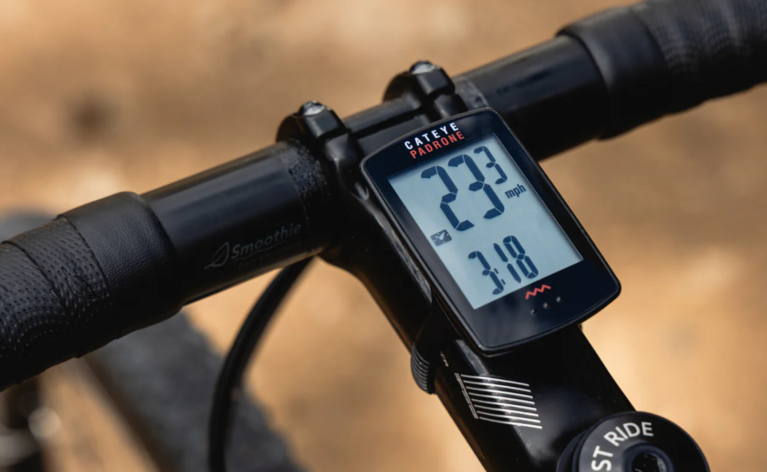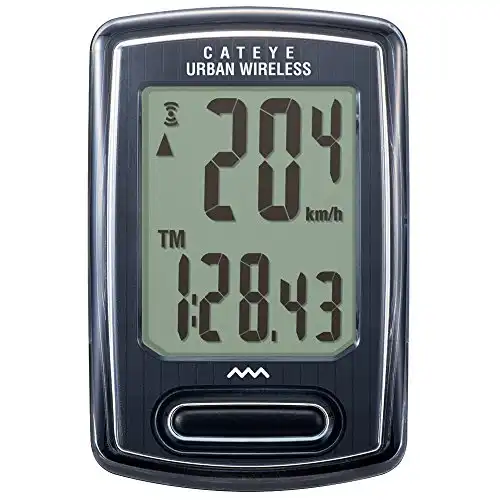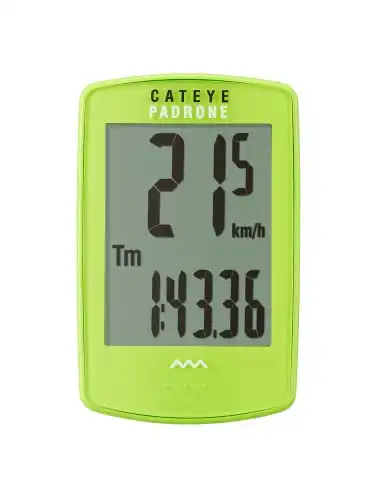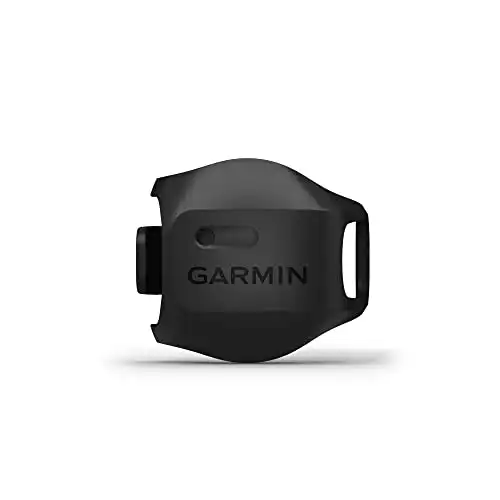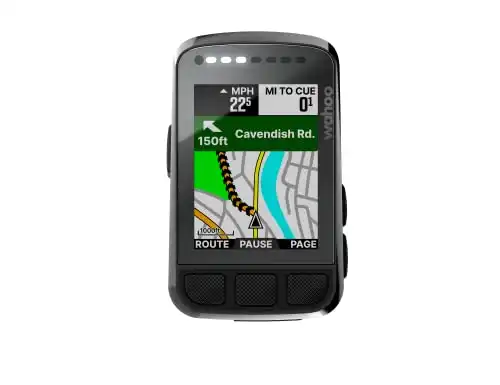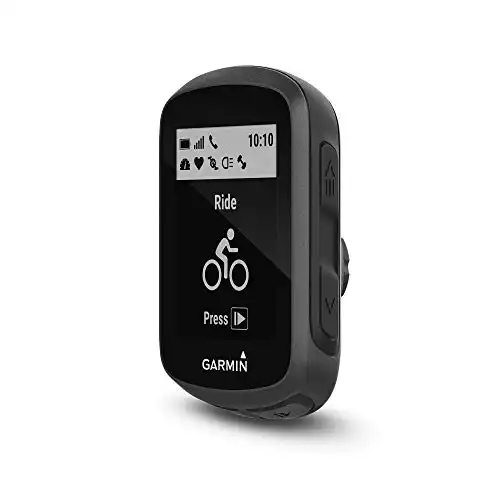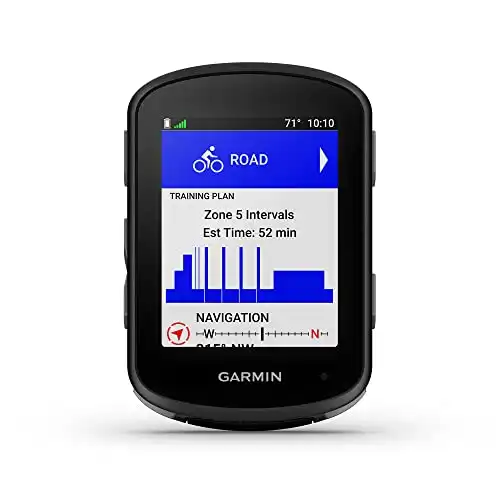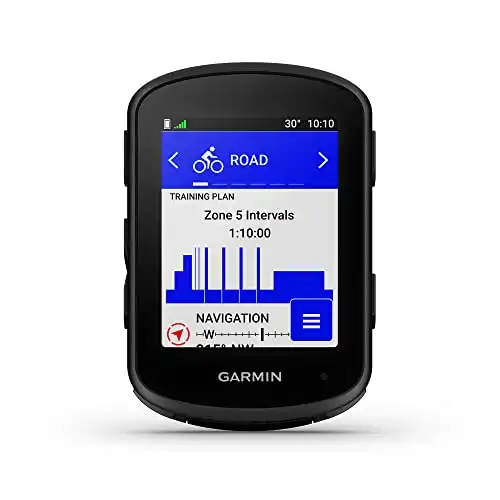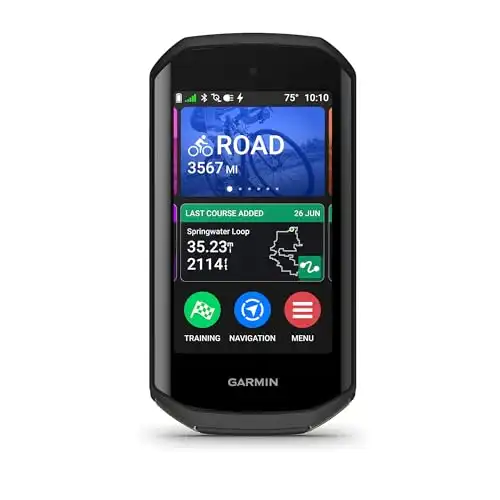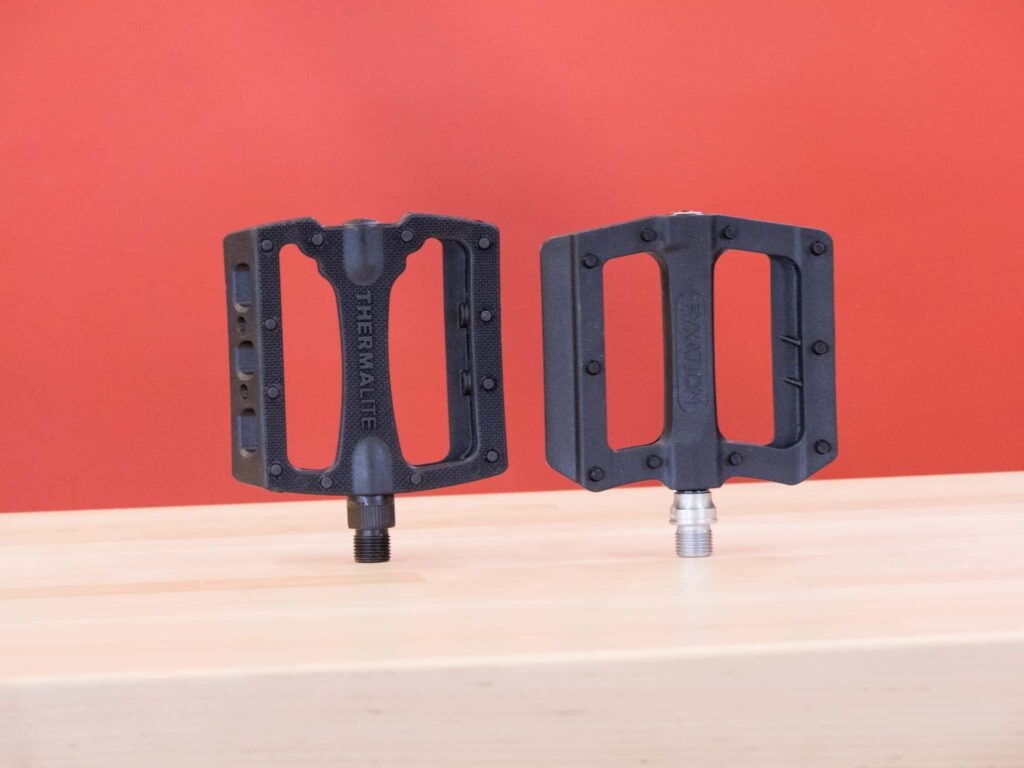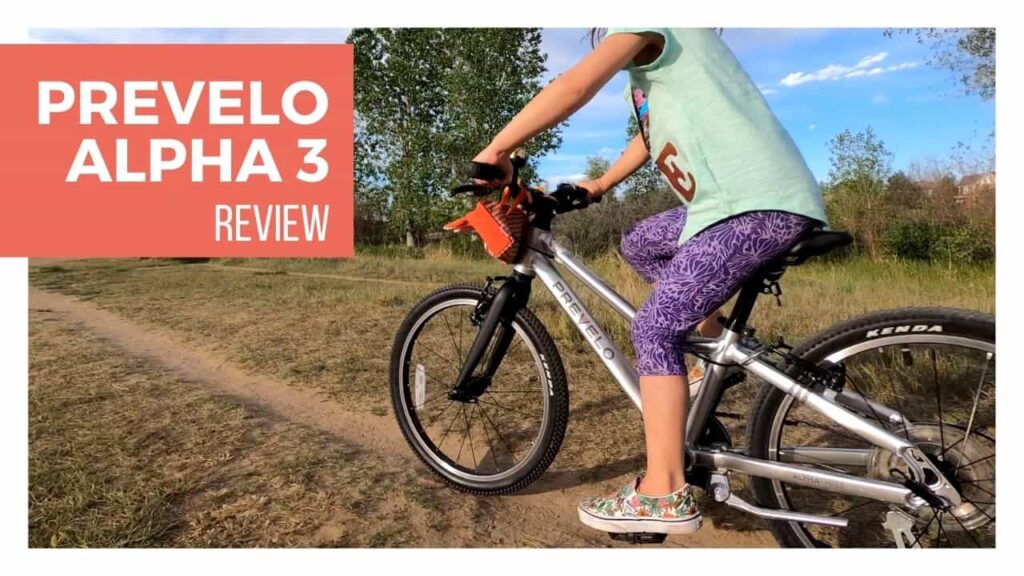A bike computer can help you expand your cycling in so many ways. From tracking your speed and distance on your bike rides to training smarter with heart rate or power zone intervals to using your bike computer as turn-by-turn navigation for your next adventure, there is a bike computer out there for you!
I’ve been using a cycling computer since the late 90s, keeping track of my mileage in high school and trying to improve my time getting home from school every day. Fast-forward to 2024, and I have a GPS smartwatch tracking my daily bike commutes around town (typically an Apple Series 8 or Forerunner 245) and a Garmin or Wahoo on my bike handlebars for more exercise-focused rides or when I need detailed turn-by-turn directions.
With all the options, what is the best bike computer for you? That is exactly what we are going to dig into today! We will explore three main types of cycling computers, compare their pros and cons, cover the basic tech lingo you need as you compare models, and ask key questions to help you decide which one is right for you.
Best Basic Bike Computers
|
N/A
|
$54.95
|
|
|
Pros:
|
Pros:
|
Pros:
|
|
Cons:
|
Cons:
|
Cons:
|
- Great Price
- Easy to Use
- Not as Good Looking
- Multiple Color Options
- Large Numbers
- More Expensive
- Simple to Use
- Less Likely to Be Stolen
- No Screen
- Requires App to Sync
A basic bike computer costs about $35 for a good wireless option. You install it with some zip ties, set your wheel size and the time of day by clicking some buttons, and you are ready to track your trip distance, speed, and more. (Let me know if installation needs a video!)
These days, I see no reason to use a wired computer unless you are on a very tight budget or, for some reason, don’t want to deal with two batteries on a computer instead of one. My two favorite wireless computers, which I’ve installed on hundreds of bikes for customers, are made by Cateye: the Urban Wireless and the Padrone. The Wireless is cheaper, and the Padrone is slick with more color options.
Another contender for wireless computers is the Garmin Speed Sensor 2. I’ve been using this on my kids’ bikes to track their trips, distances, and speed. It connects to their iPads after the rides and gives all the data without them staring at a screen. The major downfall is that you can only have one Speed Sensor 2 connected to your Garmin Connect app, so if you have multiple bikes or kids, you have to set up different phones or iPads with different Garmin Connect apps.
Some basic bike computers can also connect to cadence sensors, taillight radar, heart rate monitors, and power sensors, but I haven’t personally tried any of these. If there is one I should check out, let me know!
Phone App as Cycling Computer
I put this section directly under wireless bike computers because if you are looking for more data than a basic computer can give you, your phone might be the solution before spending $200+ on a dedicated cycling GPS computer.
Charge up your phone, install a good phone bike mount, and run Strava or Ride with GPS directly on your phone. Apps like Ride with GPS (my preferred option for bike route creation) can give you turn-by-turn directions on your phone screen, and I even prefer the Garmin Varia app on my phone over the integration with some cycling computers.
iPhones can integrate with the Apple Watch for heart rate readings, or you can get a Bluetooth heart rate monitor that can sync to your phone and bike ride tracking app.
Some of the drawbacks of using your phone as a cycling computer:
- Using a ton of data if you aren’t on an unlimited cell plan
- Overheating when in the direct sun for a long time
- Exhausting your battery
- Damaging your phone in a crash
Top Smartphone Cycling Apps:
- Strava
- Ride with GPS
- Komoot
- Tracking with Apple Watch
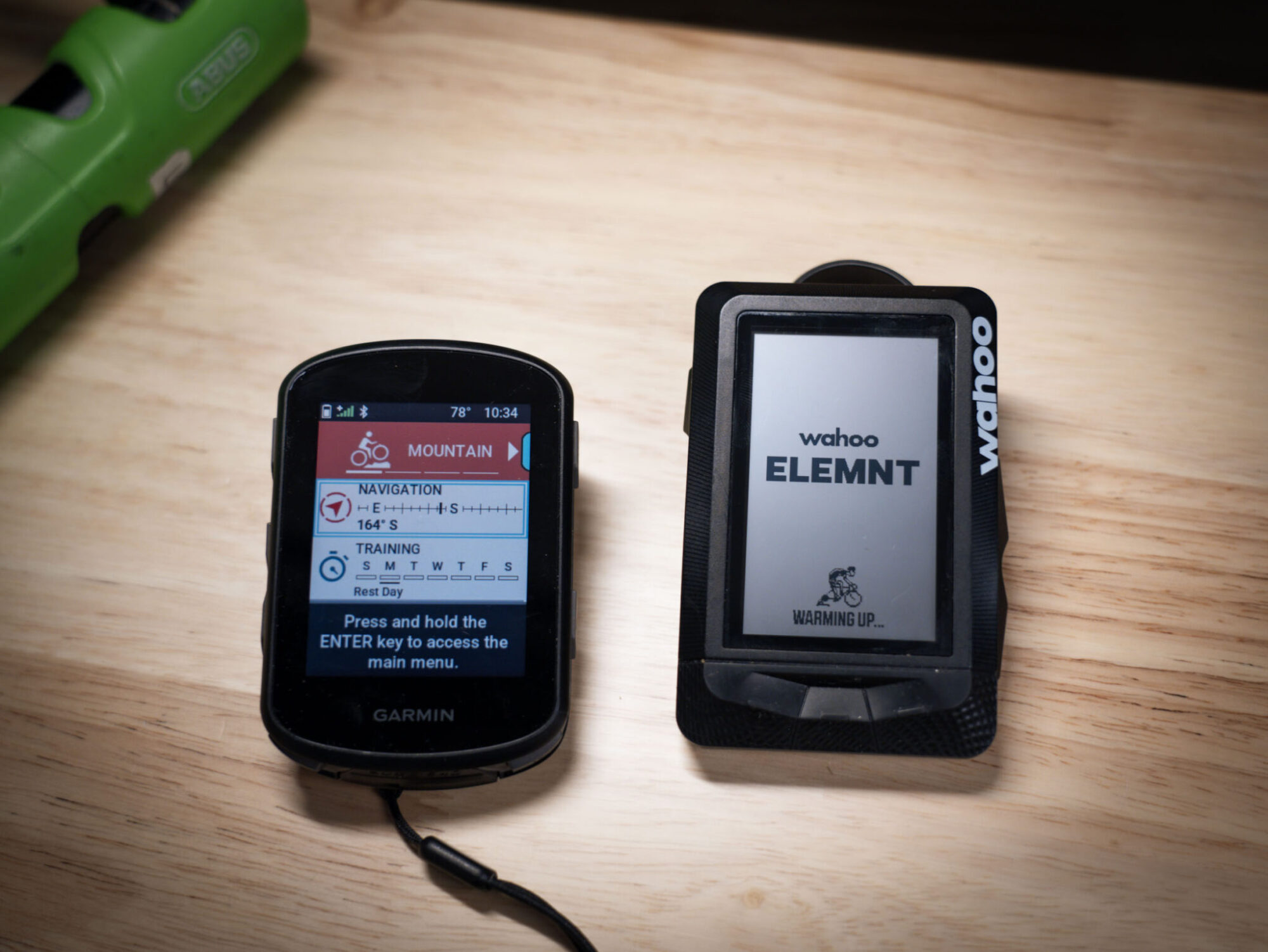
GPS Cycling Computers
Nowadays, having a “bike computer” seems synonymous with a “GPS computer.” There are huge differences between GPS brands, models, and price points. Still, the main goal of a GPS cycling computer is to use GPS technology (this varies by brand and model) to determine your position and track you along the way—the same way your phone does, but with better battery life and accuracy.
It is also worth noting that I’m focused on GPS “bike computers” and not using GPS smartwatches in this article. I love GPS-specific watches and smartwatches, and I use them daily to track my city bike rides, but they are limited for longer rides. Further down this article, I’ll cover the pros and cons of using a wrist-worn GPS or smartwatch over a dedicated GPS cycling computer.
Key benefits of a GPS cycling computer (depending on brand and model):
- Better GPS than a phone or smartwatch
- It provides much more data than a basic bike computer
- Navigation and mappingz
- Weather
- Interval training with multiple data fields that are synced from your phone
- Power data, including averages and efficiencies
- Climbing data – when a climb is coming, the profile, how far you have left
- eBikes or electronic shifting data and battery charge
- Strava integration for viewing segments
2024 Popular GPS Bike Computers
| Product Name / Product Image | Pros / Cons | Price / Primary Button / Secondary Button |
|---|---|---|
|
|
|
|
|
|
|
|
|
|
|
|
|
|
- Love the LED lights around the screen
- Great price for features
- Buttons are finicky
- Perfect first GPS bike computer
- Heart rate compatibility
- Small size
- Black and white screen
- Basic navigation
- May lack features you want like intervals and Garmin lead training analysis
- More data than most cyclist will ever need
- Wi-Fi (Faster transfers)
- No Touchscreen (maybe a pro!)
- Touchscreen
- Same as 540 but larger with a touchscreen
- $100 more than 540 for slightly bigger screen and touchscreen
- The best of the best
- Large screen for all the data fields
- Expensive
Smartwatch vs. GPS Watch vs. GPS Cycling Computer
This is an interesting section to write, and because I have so many thoughts and opinions, it will ultimately turn into an article. For now, let’s discuss the pros and cons.
- Most good smartwatches and GPS watches have a reliable heart rate monitor built-in. This is very nice as heart rate is the most important data for me in workouts, and then I think about the reliability of the GPS/tracking. If the heart rate isn’t reliable, I don’t even worry about the rest.
- Most smartwatches don’t last very long when tracking rides. My Apple Watch series 8 is good for less than a day if I track rides or workouts.
- Dedicated GPS watches, on the other hand, can last days.
- Some GPS watches can show you the same data from the above GPS cycling computer section. I don’t look at it too often, but I like the beeping or haptic feedback for intervals, heart rate, and average power.
- If you want to see data and navigation, you will look at your watch too much, which is not good.
Choosing the Right Bike Computer
Now that we’ve covered an overview of bike computers let’s discuss which one may be best for you!
Step 1: What are Your Cycling or Fitness Goals?
Are we tracking rides for motivation or maybe even to track your bike parts for wear?
Are we focused on fitness?
Do you want navigation with a larger screen?
How much data are you looking to collect and analyze?
Step 2: Battery Life
How long do you need the battery to last? A smartwatch would do very well for short rides, but if you have longer rides, then your watch won’t last. Some new Garmin GPS units have a solar option for $100-150 more. If you are touring, this may be important for you, but I never need that much battery life!
Step 3: Connectivity, Compatibility, and Screen Size
Do you want to move it between bikes? A GPS computer will be best for you
Do you want it to connect to your phone?
What other devices do you want to sync with (e.g., heart rate, power, smart trainer)?
Step 4: Budget Considerations
Are you looking to make a long-term investment because you’ve been riding and know you’ll use it or just want basic data to keep you motivated?
What do you want to have vs. a bell or whistle that you’ll never use?
Bike Computer Reviews and Recommendations
My setup changes by the month depending on what I’m reviewing and testing, but I’m typically using the Garmin Speed Sensor 2 on my kids’ bikes, the Padrone on the non-electric city bikes, and I’m reaching for the Garmin 540 to sync with my Varia rear radar. In 2024, I have a slew of new units in for testing and reviews to have more recommendations to give based on your needs. Please let me know your answers from the section above in the comments below!
Future Trends in Bike Computers
Garmin and Wahoo are still dominating the shelves of local bike shops near me. I sometimes hear of someone going with the Bryton due to pricing. I haven’t seen a Hammerhead Karoo 2 personally in the wild yet, but I’m also not in the racing scene anymore.
I would like to see an update in form factor, integration with bikes to make riders more efficient, and someone integrating with Bosch electric bikes because their navigation features are terrible.
Apple is slowly getting into the cycling space as it pushes out more updates for the Apple Watch, but sadly, it keeps missing the ball by a few feet.
Wahoo is due for some major updates and hopefully will find stable footing after the sale and buyback of the company.
Cateye is still quietly making very useful, simple bike computers. Bontrager (Trek’s accessory brand), Cannondale, Giant, and Specialized once made a full line of great bike computers. Now, it seems like they are leaving that to smaller companies, only making a couple of basic options and focusing on the bike integration parts like speed sensors built into the frame.
Final Thoughts
The 2024 cycling season is great for diving into bike computer tech. Whether you are looking for that simple and easy-to-use Cateye Velo Wireless computer or going all in on your training and want the best thing possible, like the Garmin Edge 1040 Solar, there are so many options, and it is really up to you to weigh wants and needs against your budget.
Where do you end up with your bike computer journey? Let me know in the comments!
Additional Resources and References
• Here are all my articles and videos covering the bike computer topic

